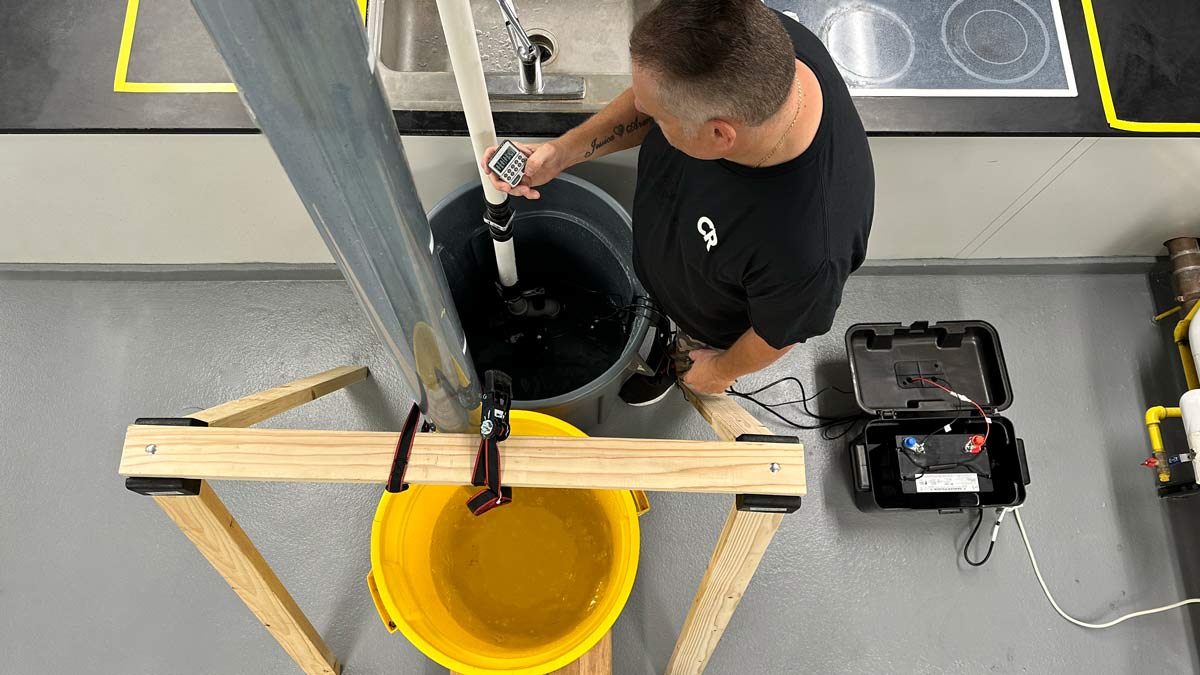Our tests use rising water levels to recreate a main system failure. Flow rates are measured based on a 10-foot vertical lift, with each pump hooked up to a 10-foot vertical discharge pipe. Testers determine the flow rate by weighing a collection barrel before and after our tests to calculate gallons per minute.
For battery-powered units, each model is tested using a 12V deep cycle marine battery with a 75 amp-hour capacity. We measure the amperage draw during operation to provide insight into how long a fully charged battery can sustain the pump while working intermittently during a power outage.
Water-powered systems are tested using a similar setup: weighing a collection barrel before and after to track the amount of water pumped out. We also calculate the amount of municipal water it takes to pump each gallon out, providing a better picture of efficiency.
We also consider the installation required for each. Pumps that don’t need much fiddling with existing plumbing get higher marks, while systems that have more complicated setups—like water-powered ones—are rated accordingly.
Last, we consider material choices, noting the differences between cast-iron and thermoplastic models. And we detail features like alarms or WiFi connectivity that can tell you when your pump is active. While these extras don’t have a direct impact on performance, they can make a pump more user-friendly and provide a measure of reassurance that your system is up and running when you need it.
Source link
